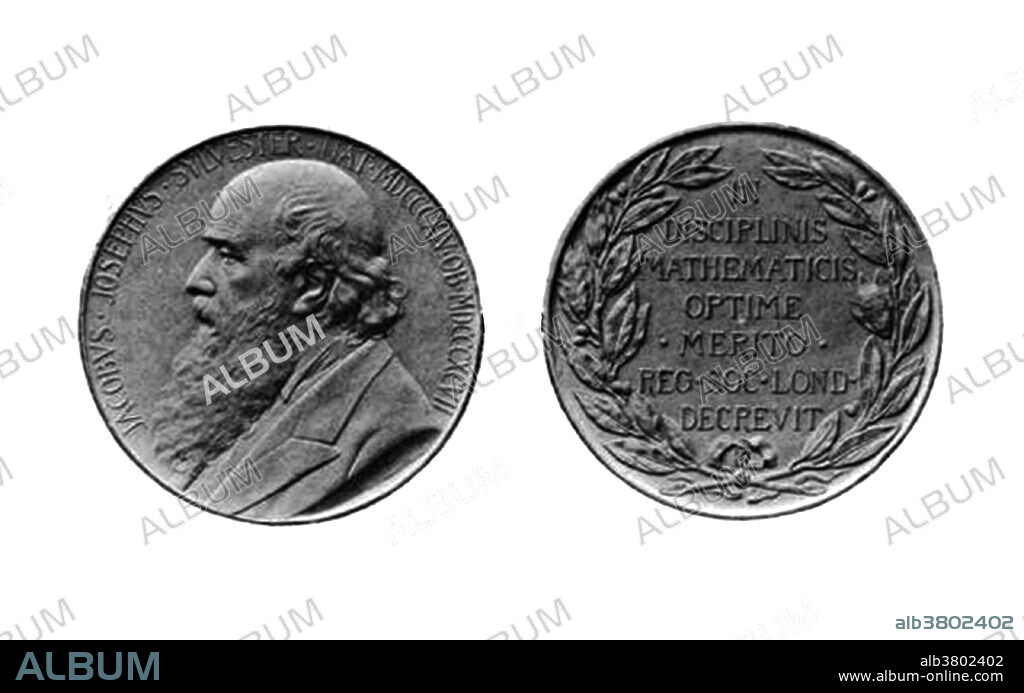alb3802402
James Joseph Sylvester, English Mathematician

|
Add to another lightbox |
|
Add to another lightbox |



Title:
James Joseph Sylvester, English Mathematician
Caption:
James Joseph Sylvester (September 3, 1814 - March 15, 1897) was an English mathematician. In 1837 he ranked second in Cambridge's famous mathematical examination, the tripos, but he was not issued a degree, because graduates at that time were required to state their acceptance of the Thirty-Nine Articles of the Church of England, and he refused to do so because he was Jewish. He briefly studied law alongside Arthur Cayley, with whom he made significant contributions to matrix theory while working as an actuary. One of his private pupils was Florence Nightingale. He made fundamental contributions to matrix theory, invariant theory, number theory, partition theory and combinatorics. In 1877 he again crossed the Atlantic Ocean to become the inaugural professor of mathematics at the new Johns Hopkins University in Baltimore, Maryland. His salary was $5,000, which he demanded be paid in gold. In 1878 he founded the American Journal of Mathematics. He invented a great number of mathematical terms such as graph (combinatorics) and discriminant. In 1883, he returned to England to take up the Savilian Professor of Geometry at Oxford University. He held this chair until his death in 1897 at the age of 82.
Credit:
Album / Science Source / Smithsonian Institution Libraries
Releases:
Model: No - Property: No
Rights questions?
Rights questions?
Image size:
4800 x 3000 px | 41.2 MB
Print size:
40.6 x 25.4 cm | 16.0 x 10.0 in (300 dpi)
Keywords:
19TH CENTURY • AMERICAN JOURNAL OF MATHEMATICS • ART • ARTWORK • BW • CELEBRITY • COIN • COMBINATORICS • ENGLISH • EUROPEA • EUROPEAN • FAMOUS • FIGURE • HISTORIC • HISTORICAL • HISTORY • IMPORTANT • INVARIANT THEORY • JAMES JOSEPH SYLVESTER • JAMES SYLVESTER • JEWISH • MALE • MAN • MATH • MATHEMATIC • MATHEMATICAL • MATHEMATICIAN • MATHEMATICS • MATRIX THEORY • MEN • NOTABLE • NUMBER THEORY • PARTITION THEORY • PEOPLE • PERSON • PERSONALITIES • PERSONALITY • PORTRAIT • POTRAIT • PROFESSOR • SCIENCE • SYLVESTER • WELL-KNOWN
 Pinterest
Pinterest Twitter
Twitter Facebook
Facebook Copy link
Copy link Email
Email

